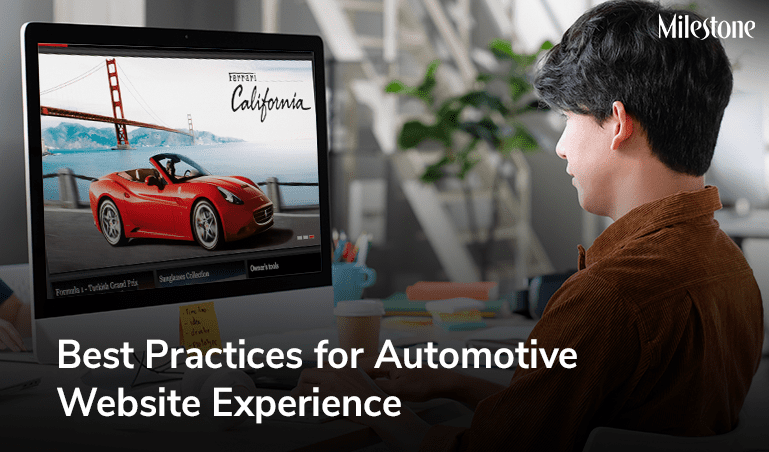Automotive websites play a crucial role in attracting and converting customers. A well-designed website can showcase your inventory, highlight your services, and make it easy for potential customers to contact you. However, with so many automotive websites out there, it’s important to make yours stand out from the competition.
Here are some best practices for automotive website design:
1. Put user experience first
The most important thing to keep in mind when designing your automotive website is the user experience. Your website should be easy to navigate, informative, and visually appealing. Visitors should be able to find the information they need quickly and easily, and they should be encouraged to explore your site and learn more about your products and services.
Some tips for improving the user experience of your automotive website include:
- Use a clear and concise navigation menu.
- Make sure your website is mobile-friendly.
- Use high-quality images and videos.
- Write clear and concise content.
- Make it easy for visitors to contact you.
2. Build Your Website on a SEO-First Platform
A SEO-first CMS boosts product visibility on search with technical SEO that can help improve a website’s crawlability, indexability, and ranking in search results. You must optimize your automotive website’s on-page SEO elements, such as title tags, meta descriptions, and header tags. Add schema markup to your website to help search engines understand your content better. This can lead to improved search results and richer snippets. A true SEO optimized website includes on page, off page and page experience optimization which directly leads in driving more search visibility and traffic.
3. Integrate with CRM to provide car buyers inventory and product experiences
Rev up the potential of your automotive dealership by centralizing data with easy CRM integrations, improving customer interactions and driving conversions.
- Built-in inventory management module
- Control inventory content that’s optimized for search
- Dealer Management System (DMS) integrations
- Managing customer data simplified with CRM integrations.
4. Use fully responsive mobile-first technology
More and more people are using their smartphones and tablets to browse the internet, so it’s important to make sure your website is mobile-friendly. This means using a responsive design that will look good and function well on all devices.
You can use a variety of tools and resources to test your website’s mobile friendliness. Google’s Mobile-Friendly Test is a good place to start.
5. Be ready for Google’s AI Page Experience and Core Web Vitals
In 2021, Google introduced a new ranking factor called Page Experience. This factor takes into account a number of metrics, including Core Web Vitals, which are a set of three metrics that measure loading, interactivity, and visual stability.
To make sure your website is ready for Google’s AI Page Experience and Core Web Vitals, you should focus on improving the following:
- Loading speed: Your website should load quickly, especially on mobile devices.
- Interactivity: Your website should be responsive and interactive, so that users can easily click on links and tap on buttons.
- Visual stability: Your website’s layout should be stable and avoid shifting around as users scroll and interact with it.
6. Optimize for conversions
The ultimate goal of your automotive website is to convert visitors into customers. To do this, you need to make sure your website is optimized for conversions. This means having clear calls to action, making it easy for visitors to contact you, and offering a variety of financing and leasing options.
Here are some tips for optimizing your automotive website for conversions:
- Use clear and concise calls to action, such as “Schedule a test drive” or “Contact us for a quote.”
- Make it easy for visitors to contact you by including your phone number and email address prominently on your website.
- Offer a variety of financing and leasing options to make it easier for customers to afford your vehicles.
- Use testimonials and social proof to build trust and credibility with potential customers.
5. Be ADA/GDPR compliant
It’s important to make sure your automotive website is ADA/GDPR compliant. This means that your website should be accessible to people with disabilities and that it should comply with the European Union’s General Data Protection Regulation (GDPR).
There are a number of resources available to help you make your automotive website ADA/GDPR compliant. The Web Accessibility Initiative (WAI) has a number of guidelines and resources available, and the GDPR website has a number of resources to help you understand and comply with the regulation.
Conclusion
By following these best practices, you can create an automotive website that is user-friendly, informative, and conversion optimized. This will help you attract and convert more customers and grow your automotive business. Milestone is a leading provider of automotive digital experiences, having worked with Nissan and Renault, if you are interested in enhancing your brands digital experiences, send us an email at [email protected] or visit us at www.milestoneinternet.com
